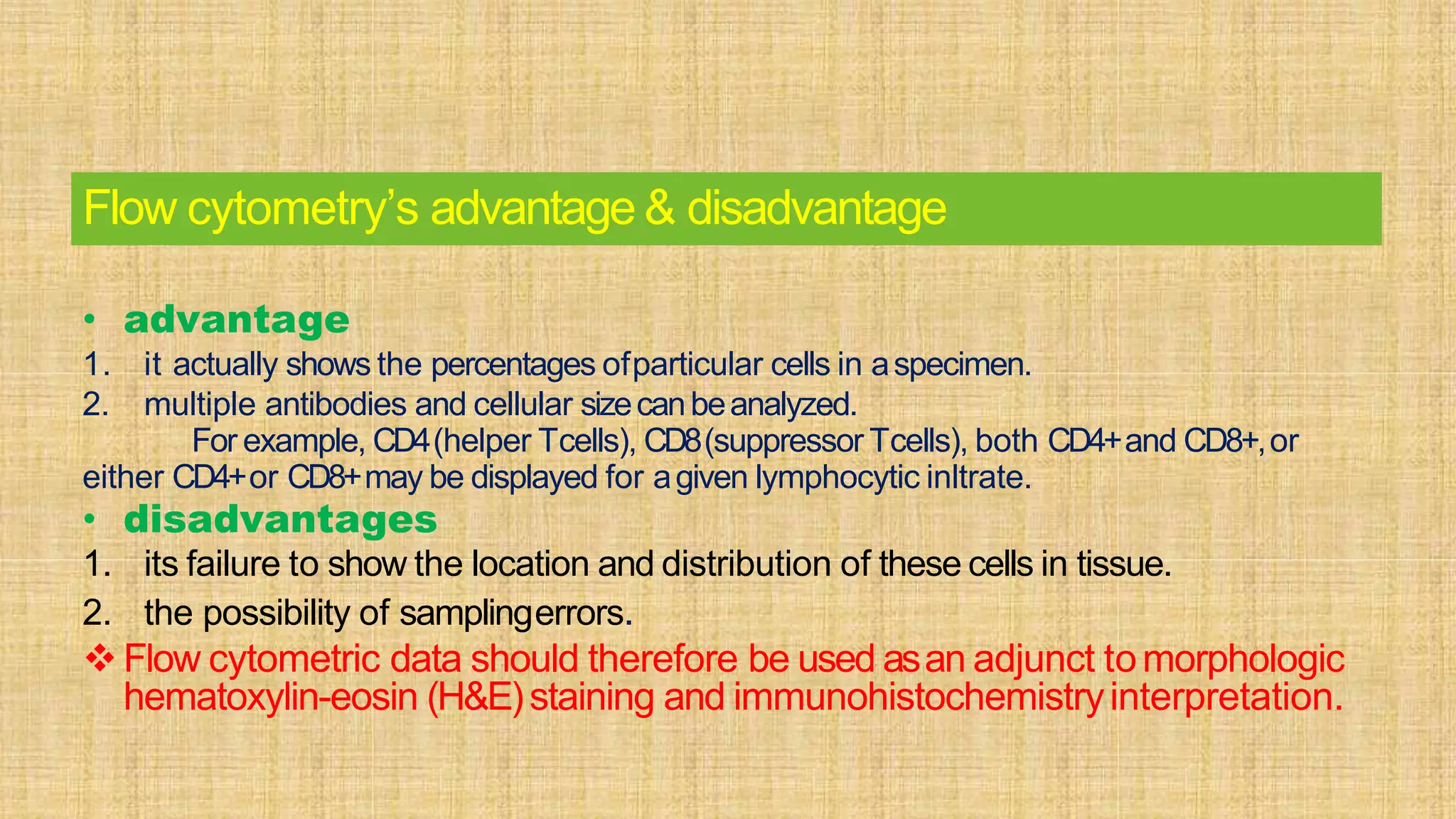This document discusses various topics in ophthalmic pathology and pharmacology. It covers:
1. The definitions and main branches of pharmacology, including pharmacokinetics and pharmacodynamics.
2. Different routes of drug delivery to the eye, including topical, local injections, and systemic administration.
3. Classes of anti-inflammatory drugs used to treat ocular inflammation, such as glucocorticoids, NSAIDs, mast cell stabilizers, and antihistamines.
4. Specific drugs used for various ocular conditions and their adverse effects.
5. Processes of wound healing, tissue fixation and processing, orientation and dissection of eye specimens, and staining for






































![Molecular Pathology
• Molecular pathology is used to identify tumor-promoting or tumor-inhibiting genes, such
asthe retinoblastoma gene (eg, via comparative genomic hybridization [CGH],
polymerase chain reaction [PCR],or array CGH),and viral DNAor RNAstrands, such as
those seenin herpes viruses and Epstein-Barr virus (eg, via PCRor in situ hybridization
[ISH]).
• Molecular pathology techniques have made it possible not only to recognize the
presence or absenceof astrand of nucleic acid but also tolocalize specic DNAsequences
withinspecic cells (eg, via fluorescence in situ hybridization [FISH]or ISH).
• Twomajor techniques have markedly advanced our knowledge of developmentalbiology
and tumorigenesis:
1. PCR(and its variations)
2. microarray (and itssubtypes).](https://image.slidesharecdn.com/ocularpharmacologyautosaved-191124050400/75/Ocular-pharmacology-autosaved-39-2048.jpg)






